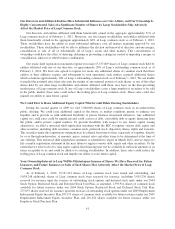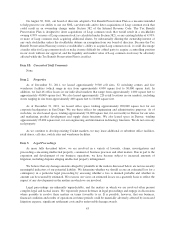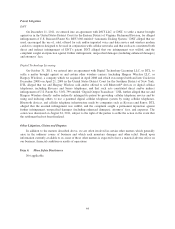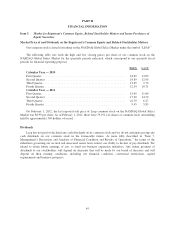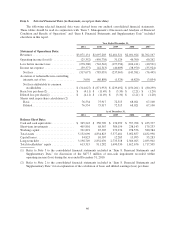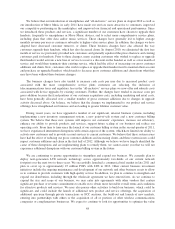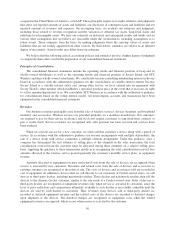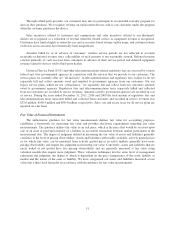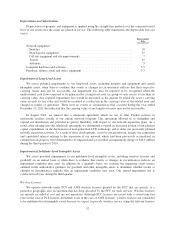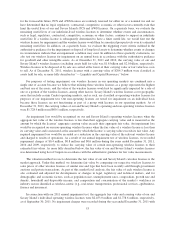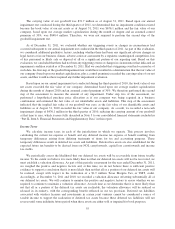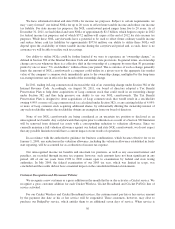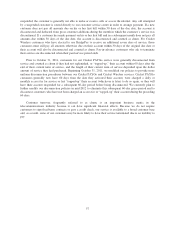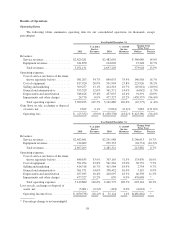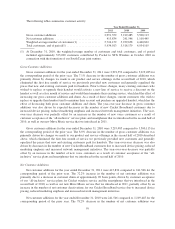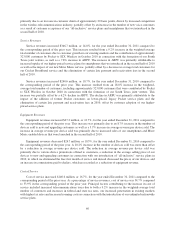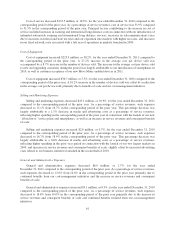Cricket Wireless 2011 Annual Report Download - page 61
Download and view the complete annual report
Please find page 61 of the 2011 Cricket Wireless annual report below. You can navigate through the pages in the report by either clicking on the pages listed below, or by using the keyword search tool below to find specific information within the annual report.Through a third-party provider, our customers may elect to participate in an extended warranty program for
devices they purchase. We recognize revenue on replacement devices sold to our customers under the program
when the customer purchases the device.
Sales incentives offered to customers and commissions and sales incentives offered to our third-party
dealers are recognized as a reduction of revenue when the related service or equipment revenue is recognized.
Customers have limited rights to return devices and accessories based on time and/or usage, and customer returns
of devices and accessories have historically been insignificant.
Amounts billed by us in advance of customers’ wireless service periods are not reflected in accounts
receivable or deferred revenue since collectability of such amounts is not reasonably assured. Deferred revenue
consists primarily of cash received from customers in advance of their service period and deferred equipment
revenue related to devices sold to third-party dealers.
Universal Service Fund, E-911 and other telecommunications-related regulatory fees are assessed by various
federal and state governmental agencies in connection with the services that we provide to our customers. The
service plans we currently offer are “all-inclusive” of telecommunications and regulatory fees, in that we do not
separately bill and collect amounts owed and remitted to government agencies from our customers. For our
legacy service plans, which are not “all-inclusive,” we separately bill and collect from our customers amounts
owed to government agencies. Regulatory fees and telecommunications taxes separately billed and collected
from our customers are recorded in service revenues. Amounts owed to government agencies are recorded in cost
of service. During the years ended December 31, 2011, 2010 and 2009 the total amount of regulatory fees and
telecommunications taxes separately billed and collected from customers and recorded in service revenues was
$32.6 million, $108.4 million and $96.4 million, respectively. Sales, use and excise taxes for all service plans are
reported on a net basis.
Fair Value of Financial Instruments
The authoritative guidance for fair value measurements defines fair value for accounting purposes,
establishes a framework for measuring fair value and provides disclosure requirements regarding fair value
measurements. The guidance defines fair value as an exit price, which is the price that would be received upon
sale of an asset or paid upon transfer of a liability in an orderly transaction between market participants at the
measurement date. The degree of judgment utilized in measuring the fair value of assets and liabilities generally
correlates to the level of pricing observability. Assets and liabilities with readily available, actively quoted prices
or for which fair value can be measured from actively quoted prices in active markets generally have more
pricing observability and require less judgment in measuring fair value. Conversely, assets and liabilities that are
rarely traded or not quoted have less pricing observability and are generally measured at fair value using
valuation models that require more judgment. These valuation techniques involve some level of management
estimation and judgment, the degree of which is dependent on the price transparency of the asset, liability or
market and the nature of the asset or liability. We have categorized our assets and liabilities measured at fair
value into a three-level hierarchy in accordance with the guidance for fair value measurements.
51


